3 Things Most Americans Use That Even Rich Brazilians Don’t
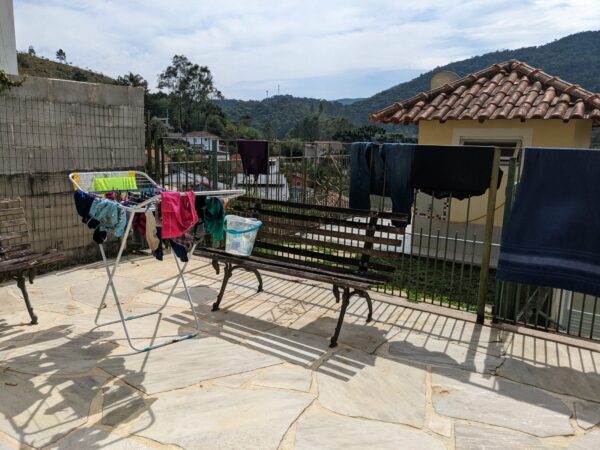
The amenities we lived without show that conserving energy is more about systems than individual choices. (Read to the end for one thing Brazilians use that I wish we had in the States!)
Condomínio Paradiso lived up to its name in many ways. The gated community just outside of Teresópolis, Brazil, a 2-hour drive north of Rio de Janeiro, was where we spent the first month of our family sabbatical. It was indeed paradisical, with a sparkling outdoor pool, heated indoor pool, soccer field, playground, game room, trampoline, gym, and workers that seemed to be constantly cleaning and renovating the place.
While the people who lived here were pretty well-off and could probably afford any amenity they wanted, there were a few things our rental house just didn’t have, which we were used to having in the United States. It wasn’t that people couldn’t afford them; it was just that they weren’t expected. These amenities were simply not a part of what was considered “necessary” to a standard house. Yet back home, they are built in.
Laundry Dryer
Like people in many other countries outside of North America and Europe, Brazilians dry their clothes on lines. Our house came equipped with two washers, a drying rack, and clothespins. Dryers are not a thing. Having lived in other countries where this is also standard, I quickly got into a rhythm of budgeting at least a half day of good sunshine, a whole day of cloudy weather, or even more time for rainy weather, to let the clothes dry.
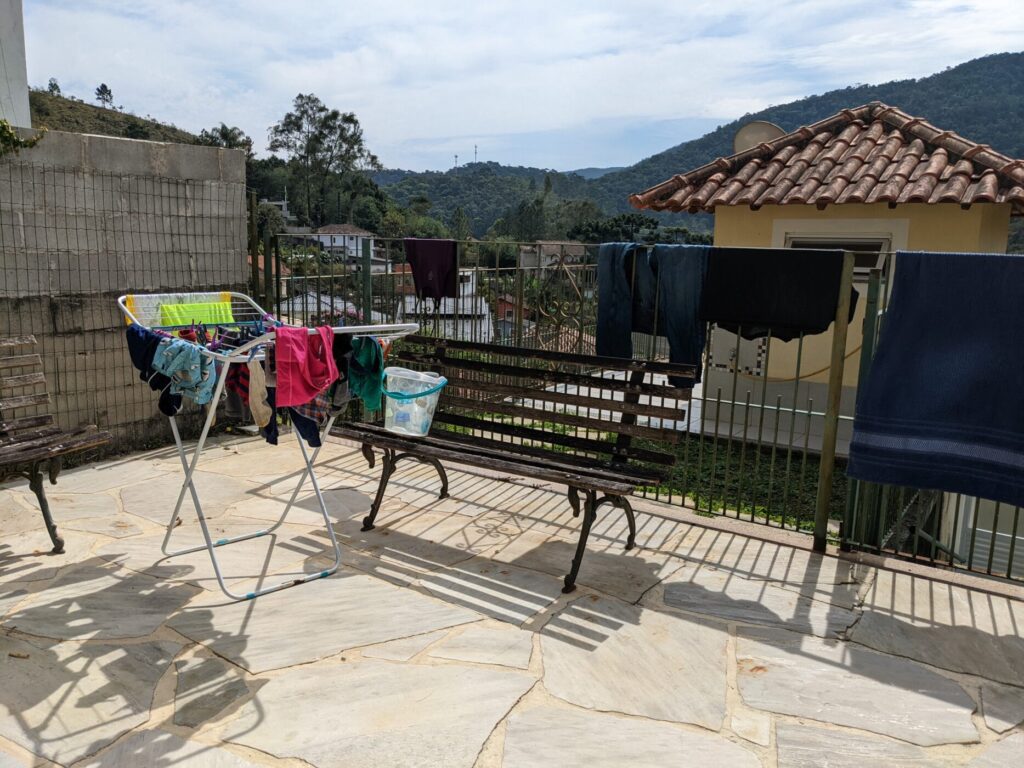
It wasn’t inconvenient once we knew what to expect. I even roped the boys into helping with hanging out the clothes to dry, which is a great chore for younger kids to start feeling included and important in the family.
Indoor Heating/Cooling
We spent a month in July-August here, which is winter in the Southern Hemisphere. Though the weather is relatively mild by midwestern US standards, lows at night did sometimes get into the mid-40s Fahrenheit. Houses here are built with the assumption that the weather is decent most of the time, and you make do when it gets just that bit too cold or hot.
On chilly days, this meant wearing layers of clothing. We tried to take hikes and make the most of the warm sunshine when we could. At night, we were grateful for the extra-thick blankets that our host provided.
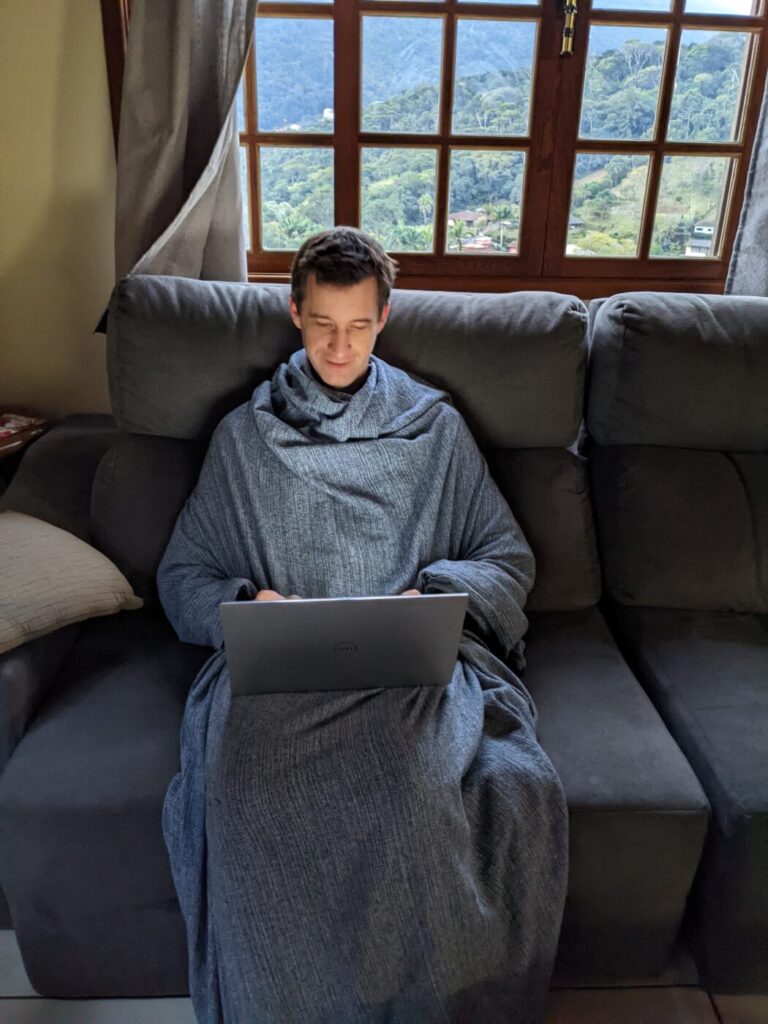
At home in the U.S., whenever the temperature drops below about 65 degrees, our central heat kicks on. Over about 75 degrees, we switch to air conditioning. As someone who cares about conserving energy, I push my family to withstand lower lows and higher highs before we start up the HVAC system, ideally within a range of 60-85 degrees, though we usually cave earlier. We wear sweaters and slippers in the winter. In the summer, we open windows and use cross breezes and fans. Still, whenever we start getting too uncomfortable, it’s easy to just dial up or down the knob on the thermostat and rely on our home’s built-in climate control.
In Brazil, we’ve had no choice. We make do because we have to, even to the point of blaring music and having a family dance party just to get warm. Despite my ice-cube toes, which Matt definitely does not appreciate having in the same bed, we’ve been fine.
Hot Water on Tap
While we did have hot water in the showers (thank heavens!) the other faucets in the house were cold-only. No warm water for splashing on our faces in the morning. No hot water to melt the grease off the dishes. Again, it’s not something we prefer, but once you get used to something, it becomes normal. You figure out workarounds when you really need to. One time Matt made croissant-like pastries involving tons of butter. To properly clean the baking pan, I poured boiling water over it a few times. No big deal.
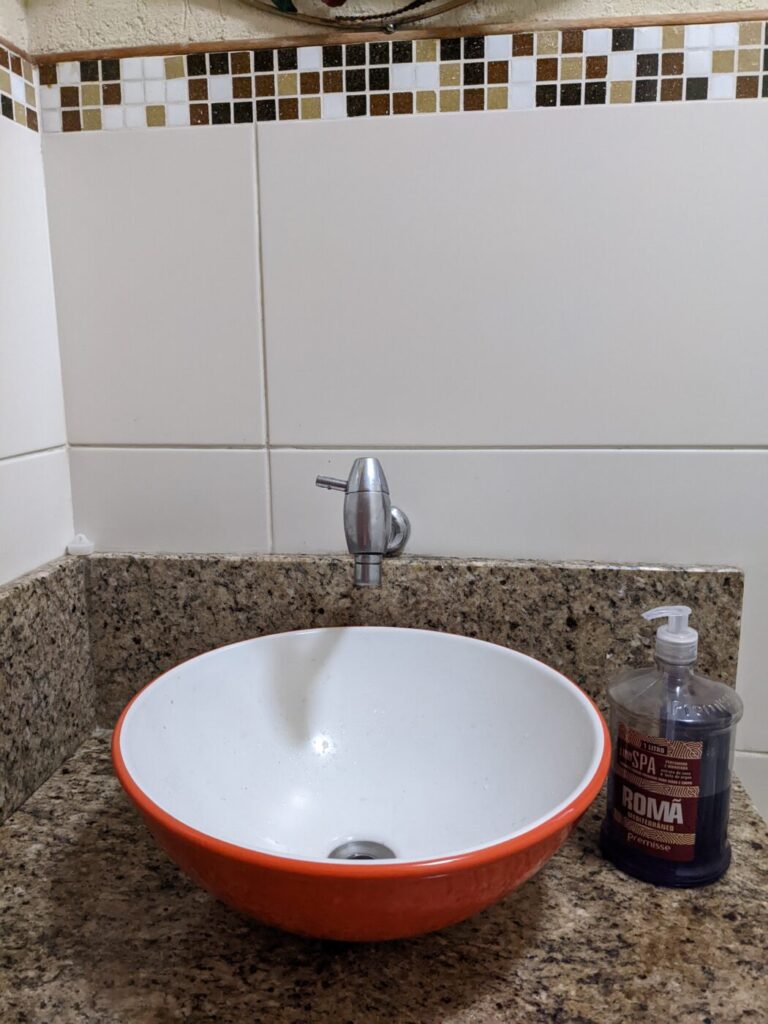
Energy Choices and Energy Systems
I’ve been thinking a lot about these differences between Brazil and the United States, how it got this way, and what it all amounts to on a large scale.
Starting in the 1960s in the U.S., HVAC systems got relatively affordable for the masses and became standard in houses across the country (though there are some holdout regions, like the Pacific Northwest, where most homes don’t have A/C). Today, 87 percent of American homes have air conditioning. Machine washers and dryers became common around that same time, while hot running water came about a few decades earlier.
The post-World War II consumption boom gave the impression that energy was endless, progress was our destiny, and each American was entitled to every consumer convenience the market offered.
Today in Brazil about 20% of households have air conditioning, despite many regions being subtropical or equatorial, subject to intense heat for large parts of the year. In some areas of Brazil, particularly large cities like Rio de Janeiro, more households are adopting air conditioning. Reasons have to do with increased income, education, and infrastructure. In other words, people who have money, knowledge, and live in places with a reliable supply of electricity tend to have access to air conditioning. To put it even more bluntly, people who have choices will choose to be comfortable when they can.
It also has to do with expectations and culture shifts. If you see everyone around you doing things one way–for instance, buying window A/C units–you’ll want to “keep up with the Joneses” and not miss out on the new trend. But if everyone else keeps hanging out their laundry to dry, you probably won’t see the need to get a fancy new drying machine.
It’s not immoral to heat or cool your home, dry your clothes in a machine, or use hot water to wash your dishes. But it’s worth thinking twice about the systems we are part of when we do these mundane activities. Heating and cooling make up about half of the energy consumption in U.S. homes. In areas without heating and cooling, energy consumption is slashed in half, if not more, as lower income likely also means less use of other energy-intensive appliances, like computers, ovens, and dryers.
I’m sure if these folks sweating or shivering it out had the choice, they would choose to turn on an air conditioner or heater. But often, in our American lives so accustomed to ease and convenience, we consume energy without thought, when it isn’t even necessary. Why do we cool our buildings to a frigid temperature that requires many to wear sweaters indoors in the summer?
These are systems which individuals don’t have much control over. In fact, the biggest predictor of carbon emissions isn’t “green” attitudes, but wealth. Even if people like myself want to act in environmentally friendly ways, the fact that we have large amounts of disposable income and live in a wealthy country means that we will by default consume more energy and emit more carbon than poorer neighbors (or even rich Brazilians!).
If I, as a relatively rich American living in the suburbs, wanted to really reduce my energy consumption, I’d basically have to live off the grid — not drive a car, not live in my big house that takes a ton of energy to heat and cool, not take flights. I’d have to exit the American energy system, and with it, American society. These are not choices one can make blithely.
This Vox article puts it well: “One’s environmental impact is primarily determined by structural features of one’s life circumstances, especially socioeconomic status.”
So What?
Given that individual choices are not as important as energy systems, what can a person do? Obviously, we can’t all move to the mountains in Brazil where temperatures are mild and choices are made for us. A few thoughts here: individual integrity, systemic change, and climate change preparedness.
Individual Integrity
While one person’s choices may not make a dent in the overall energy consumption patterns of a country, I do believe they matter. Since we still rely so much on fossil fuels, more energy use = more fracking, coal mining, oil drilling, and generally more destruction of fragile ecosystems. If we desire to honor the earth and leave it better for future generations, we will act in ways consistent with that posture of heart by reducing our energy use.
Our attitudes toward the rest of creation, even practiced in small ways, can spread from individuals, to families, to churches, to communities. Little by little, we can begin to shift our culture away from its reckless exploitation of the earth to lifeways that honor the land that sustains us.
Systemic Change
The problem lies within the energy system itself. Humans made the system. We can change it. One encouraging example of this is the Inflation Reduction Act, which was just signed into U.S. law this month (August 2022). It is a landmark bill that begins to address climate change and shift energy incentives from profiting the dirty fossil fuel industry to investments in clean, renewable energy. By 2030, it is predicted to reduce carbon emissions 40% below 2005 levels. This is huge.
We need changes like this on every level, from federal policy, to corporate practice, to smaller, but crucial decisions made by municipalities, schools, churches, and local businesses. Whatever your sphere of influence, you can make choices that support reducing energy use and switching over to clean energy.
Climate Preparedness
Energy demand is going up as the population grows and extreme heat waves push more folks to buy new A/C units or run their existing ones more frequently. This places unprecedented pressure on national electricity grids and will in some cases lead to blackouts and higher electricity prices.
As always, poorer folks are suffering first. A knee-jerk reaction from those of us with resources will be to say, “Oh well, at least it’s not me.” We may be tempted to take a “me first” mentality, the same posture that prompts people to hoard toilet paper or gasoline when it’s scarce. But my values–and perhaps yours–lead me toward caring for my neighbors. I can only truly thrive when everyone else, including more-than-human creation, also thrives.
When it comes to the worsening heat, fires, and other disasters, this means we need to think beyond, “how can I prepare so that me and my loved ones have enough?” to “how can we as people working for a more just society think long-term toward collective survival?” These are questions that this little blog post is not able to answer, but many are working hard to address them. For me, reducing personal energy consumption is one way I can “live simply so that others may simply live.”
On a Lighter Note
I started out writing a short post about amenities that has turned into a long-winded, too-preachy post about energy systems. On a lighter note, there was one amenity at our first month rental home that I loved, and would bring back to the U.S. in a heartbeat.
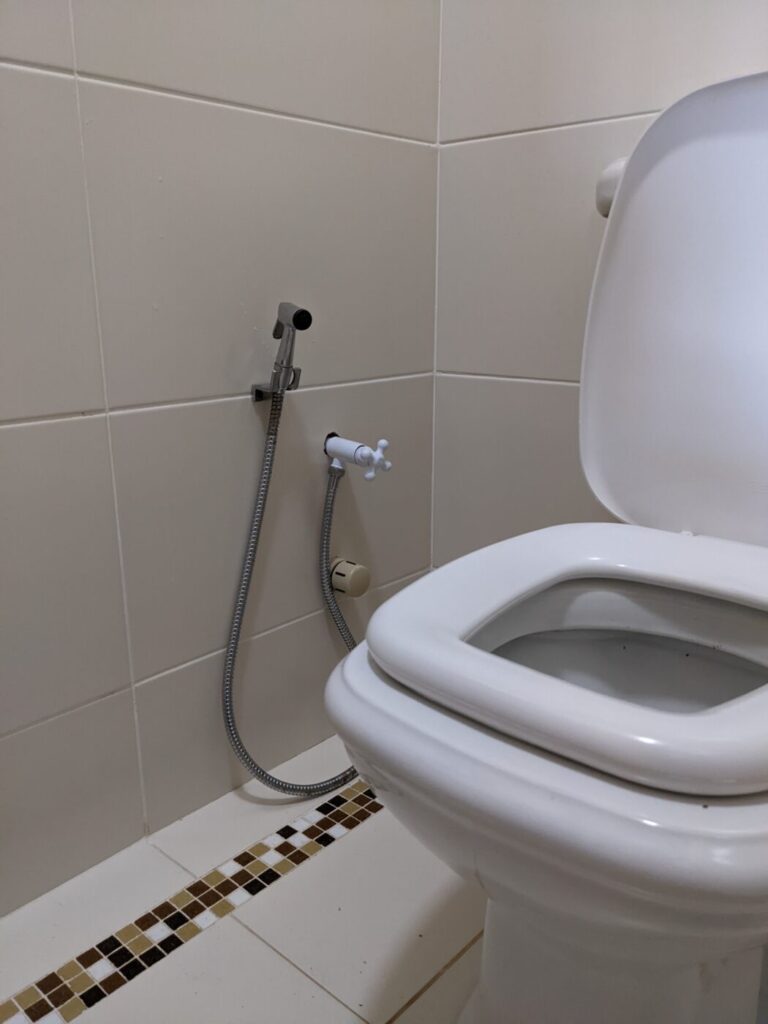
Yep, bidets. What we had at Condomínio Paradiso was basically a water-sprayer next to the toilet that helps you get squeaky clean in quicker order than toilet paper. Uses no extra energy except what is put into manufacturing and installing the device, and saves paper! In a world where toilet paper hoarding is on the rise, maybe this is a change we can all get behind.



